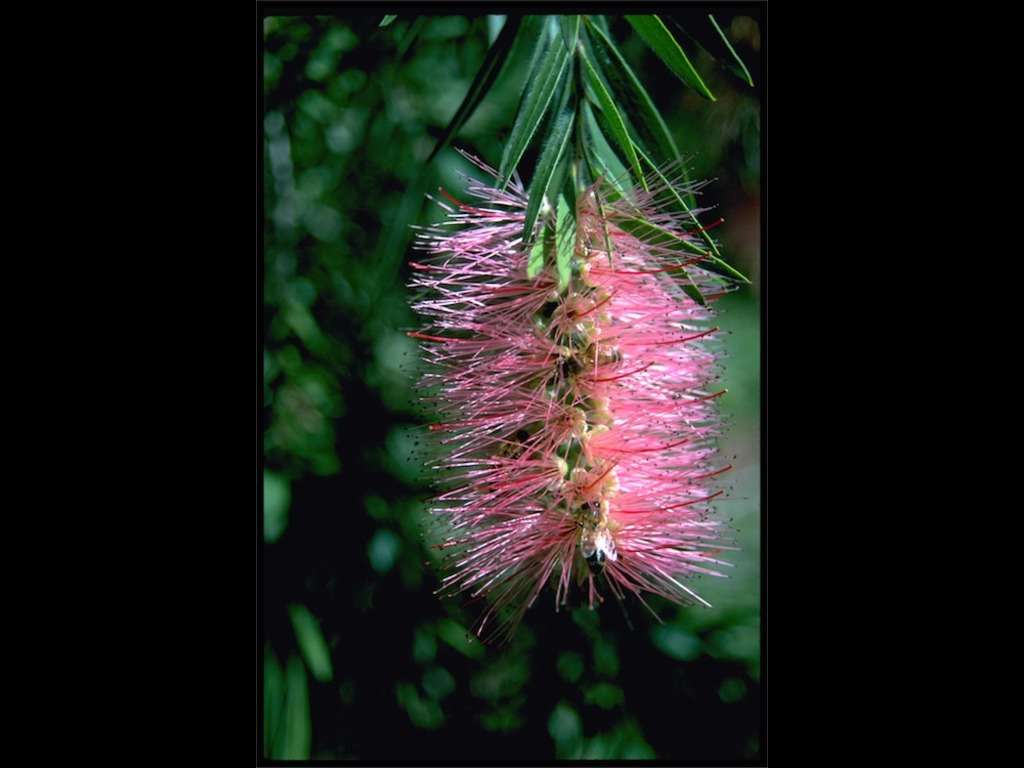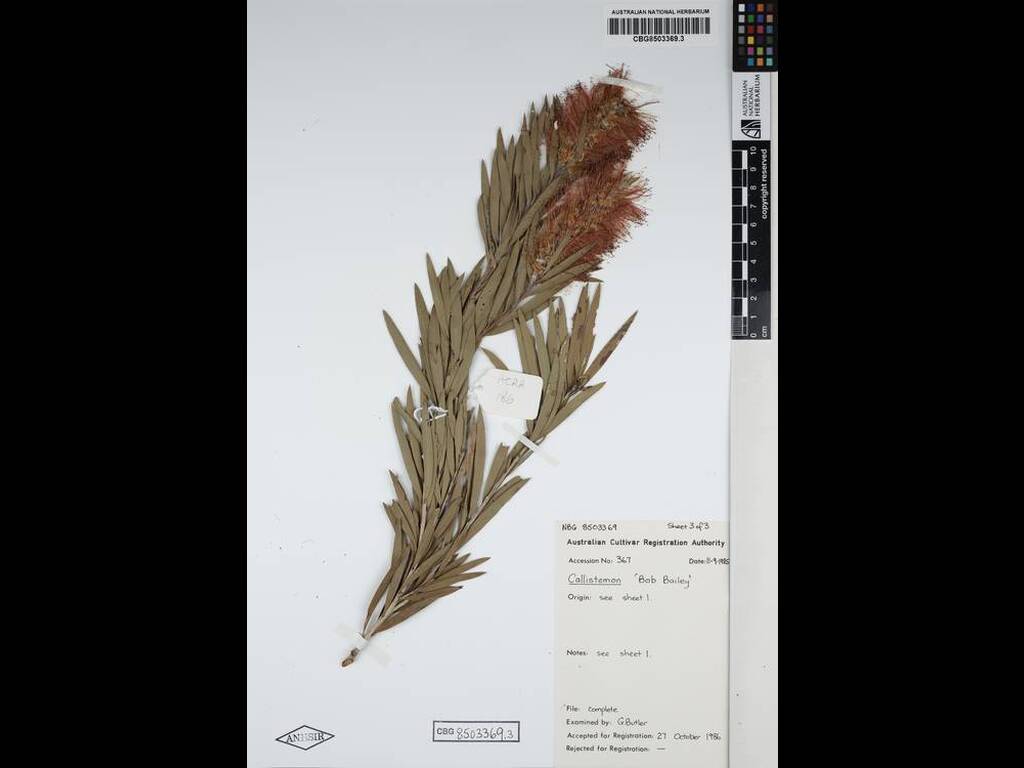Callistemon 'Bob Bailey'
- File Number
- 367
- ACRA Field Book Number
- 186
- Registration Date
- 25/10/1986
- Application Received
- 11/09/1985
- Family
- Myrtaceae
- Cultivar Name
- Callistemon 'Bob Bailey'
- Origin
- Callistemon 'Bob Bailey' was originally obtained as a container plant from Flora Trop Nursery, Kelso, by the Townsville Group of S.G.A.P. The seed from which this plant arose was collected from a cultivated plant of Callistemon viminalis growing at the Heatley State Primary School. The cultivar was named after Robert Bailey, a principal at Heatly State Primary School in North Queensland who had given his whole career to teaching in this area. The cultivar was first received by the Authority on 11th September 1985.
- Characteristics
- The general morphology of this cultivar resembles C. viminalis, growing to 5m tall by 3m wide. The flowers are in dense spikes 100-160mm long by 60mm wide and the filaments are pink in colour. The flowering season in Townsville is from August to October. Diagnosis: Callistemon 'Bob Bailey' can be distinguished from the typical form of the species by the denser arrangement of flowers on the spikes and by the flower colour.The filaments are pink instead of the more usual red. The inflorescence is also slightly wider than is usual for the species. Other notes: The cultivar was introduced to horticulture in limited numbers in 1984. It has proved drought tolerant in Townsville, with even young plants surviving well through an extended dry period. The general performance of the cultivar in other parts of Australia should be as for C. viminalis. The cultivar must be grown by vegetative means to ensure the cultivar form.
- Cultivation
- Hardy, reliable and adaptable cultivar which flowers prolifically, growing well in most soils. Best in a sunny site but will tolerate some shade. It responds well to heavy pruning and is drought tolerant and frost hardy.
- Publication
- Wrigley, J.W. & Fagg, M. (1993), Bottlebrushes, paperbarks & tea trees and all other plants in the Leptospermum alliance: 80
- Colour Coding
- RHS Colour Code 1966 Flowers.filaments: red-purple group 63C.style: red group 46C.anthers: black.
- Propagation
- Cuttings from semi-firm new growth
- Applicant Name
- Registration applied for by Dr. B. Jackes on behalf of the Townsville Branch of the Society for Growing Australian Plants and Flora Trop Nursery, Kelso.
- Uses
- As part of a mass planting or mixed in a shrubbery, or as a spectacular feature plant.
- Availability
- Specialist native plant nurseries
- ANBG Accession Numbers
- ACC367; ACRA186; CBG8503369
- NSL ID
- https://id.biodiversity.org.au/name/apni/157566


